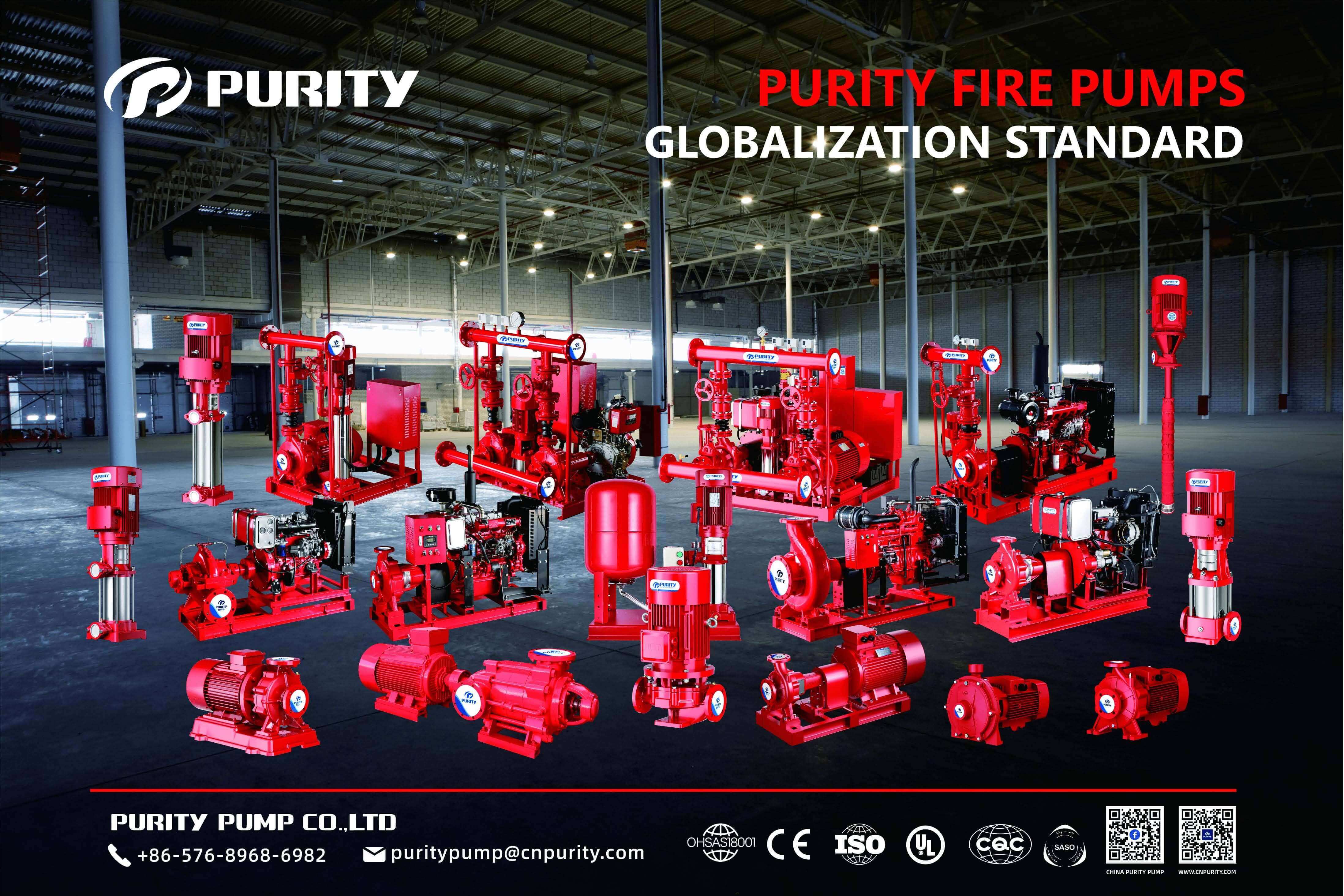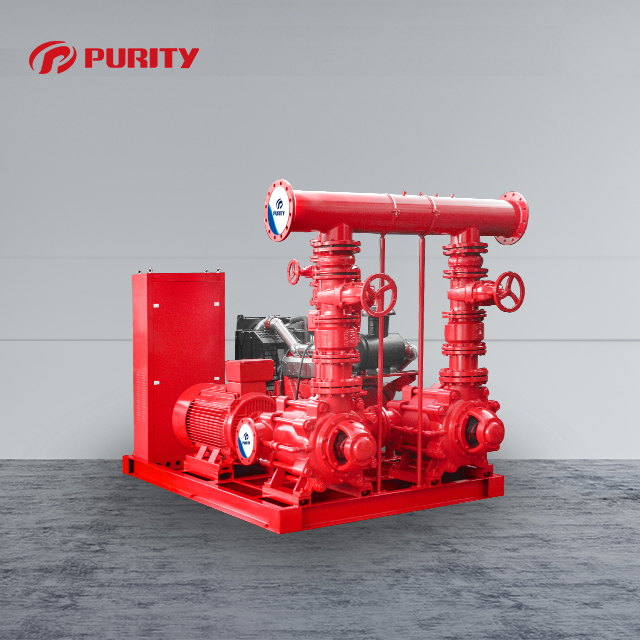Fire hydrant systems are critical components in fire protection strategies, ensuring a reliable water supply to extinguish fires efficiently. Central to the functionality of these systems are the pumps, which provide the necessary pressure and flow rate to deliver water through the hydrants. This article explores the various types of pumps used in fire hydrant systems, their working principles, and their importance in maintaining effective fire protection.
Types of Fire Pumps
1. Centrifugal Pumps:
Usage: Centrifugal pumps are the most commonly used in fire hydrant systems due to their ability to handle high flow rates and moderate to high pressures. They are ideal for applications like fire hydrants and sprinkler systems.
Functionality: These pumps work by converting rotational energy from an impeller into kinetic energy, which increases the water pressure. They are available in various configurations, including end-suction, horizontal split-case, and vertical inline pumps.

Figure | Purity fire Pump Family Photo
2. Vertical Turbine Pumps:
Usage: Vertical turbine pumps are frequently used in high-rise buildings and industrial facilities where water needs to be drawn from deep wells or reservoirs.
Functionality: These pumps have a vertical shaft with multiple impellers stacked on top of each other, enabling them to deliver high-pressure water effectively.
3. Positive Displacement Pumps:
Usage: These pumps are suitable for applications requiring precise flow control and constant pressure, such as foam proportioning systems and high-pressure water mist systems.
Functionality: Positive displacement pumps operate by trapping a fixed volume of fluid and displacing it with each pump stroke. Types include piston pumps, diaphragm pumps, and rotary pumps.
4. Horizontal Split-Case Pumps:
Usage: Used where high flow rates and pressures are needed, such as in industrial fire water supply systems and large-scale fire protection systems.
Functionality: These pumps feature a horizontally split casing, allowing easy access to internal components for maintenance and repair.
5.Diesel Engine-Driven Pumps:
Usage: These pumps serve as backup or secondary pumps, ensuring reliable operation during power outages or when electricity is unavailable.
Functionality: Powered by diesel engines, these pumps are critical for providing continuous fire protection, especially in remote locations.
6. End Suction and Vertical Inline Pumps:
Usage: These pumps are also common in fire hydrant systems, offering flexible installation options and reliable operation.
Functionality: End suction pumps are designed for easy maintenance, while vertical inline pumps are space-saving solutions suitable for various fire protection applications.

Figure | Purity PEDJ fire Pump
Working Principles of Fire Pumps
Fire pumps are powered by diesel, electricity, or steam. They operate in conjunction with jockey pumps, which maintain artificial water pressure in the fire sprinkler system pipes. This setup prevents damage to fire pumps due to sudden water influx and pressure changes. Fire pumps do not run continuously; instead, they activate when the pressure drops below a set threshold, ensuring consistent water flow during a fire emergency.
1. Diesel, Electric, or Steam Operation:
Diesel and Steam: These options provide robust alternatives when electrical power is unreliable or unavailable.
Electric: Commonly used due to its integration with the building’s power supply, ensuring seamless operation.
2. Integration with Jockey Pumps:
Function: Jockey pumps maintain the system’s water pressure, preventing unnecessary wear and tear on the main fire pumps.
Benefit: This reduces the risk of damage from pressure surges, prolonging the lifespan of the fire pumps.
3. Motor Power and Emergency Generators:
Normal Operation: Fire pumps are powered by motors connected to the municipal electricity supply.
Emergency Situations: Transfer switches can redirect power to emergency generators, ensuring the pumps continue to operate during power outages.
Importance of Fire Pumps and Valve Rooms
Fire pumps are indispensable in maintaining the necessary water pressure for effective fire suppression. They ensure that water can be delivered to fire hydrants and sprinkler systems at sufficient pressure, even in challenging circumstances. Valve rooms, which house control and drain valves, play a crucial role in managing the distribution of water within the system. They allow for isolation and control of different sections of the fire protection system, ensuring that maintenance and repairs can be conducted without compromising overall system integrity.
Regular maintenance and testing, as mandated by the National Fire Protection Association (NFPA), are essential to ensure the reliability and effectiveness of fire pumps and valve rooms. This includes checking for leaks, lubricating moving parts, and performing performance tests under simulated fire conditions.
Conclusion
In conclusion, fire pumps are the backbone of any fire hydrant system, providing the pressure and flow needed to combat fires effectively. From centrifugal and vertical turbine pumps to diesel engine-driven and positive displacement pumps, each type has its specific applications and advantages. Proper integration with jockey pumps and reliable power sources ensures these pumps perform optimally during emergencies. Regular maintenance and adherence to NFPA standards further guarantee their reliability, making them a critical component of any fire protection strategy.
Post time: Jul-11-2024




